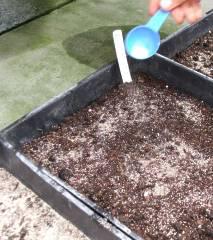Streptocarpus saxorum
Streptocarpus saxorum (Engler)
Family: Gesneriaceae
Common names: false African violet; Cape primrose
Introduction
This is a charming Streptocarpus with dainty lilac flowers. It is both pretty and tough with succulent foliage which droops, making it ideal for hanging baskets and tall pots.

Description
Description
S. saxorum is a small herbaceous plant that forms mounds of about 5-8 cm high. This semi-shrubby stemmed species falls under the subgenus Streptocarpella and the foliage is quite different to the more common Streptocarpus. Its slender, hairy stems spread along the ground crowded with small, matt-green, softly hairy, fleshy, elliptic to ovate leaves that occur in whorls of three. Its branches become slightly woody with age. The young growth is quite flexible and will naturally trail from a suspended container/pot.

The single or paired tubular flowers occur on slender stalks, arising from the upper leaf axils. They are very attractive with a white tube contrasting with lilac-mauve, violet-like lobes. The three lower petal lobes are larger than the upper two. The flowers are small in size, but are produced continuously throughout the spring and summer months, even into winter when growing conditions are favourable.
The slender twisted seed pods are velvety when unripe, and as they dehisce they twist open longitudinally releasing many small fine seeds.

This plant is relatively fast growing as it takes one year for a young seedling to grow to flowering size.
Conservation Status
Status
None.
Distribution and habitat
Distribution description
This plant occurs in Kenya and Tanzania. It is found on rocks and cliff faces which are often exposed to the sun.
Derivation of name and historical aspects
History
Streptocarpus derives from the Greek streptos, twisted, and karpos, a fruit. The species name 'saxorum' is a reference to it occurring amongst rocks.
S. saxorum was first described in 1983 from material found on rocks by C. Holst.
Streptocarpus belongs to the same family, Gesneriaceae, as do the well known African violets and gloxinias that are grown as pot plants all over the world. This is a large family of mostly tropical and sub-tropical herbs, with ±130 genera, and ± 2900 species worldwide. There are 8 genera in Africa, with the one genus, Streptocarpus, in South Africa and it has ±51 species. The family is named after Konrad Gesner, a Swiss scholar. In 1963, 30 years after his death, his name was given to this family.
Streptocarpus is a genus of evergreen perennials, monocarps and annuals which can be grouped into three distinct growth forms:
- stemless clump forming rosettes
- unifoliates (plants with a single leaf)
- soft shrubby stemmed plants
Their habitat varies greatly from forests, sometimes as epiphytes, and on damp bank or rocks in grasslands. They are sometimes referred to as Cape primroses.
Gesneriaceae are often epiphytic (growing on trees) or lithophytic (growing on rocks). The very small seed is wind distributed.
Ecology
Ecology
Cape primroses are an unusual genus in that in that some of its members have the unique habit of producing only one leaf in their lives. An unusual feature of the unifoliate Streptocarpus is that one cotyledon dominates and enlarges substantially, occasionally with some basal leaves, then dies after flowering (monocarpic).
Uses
Use
Streptocarpus are herbaceous plants with attractive flowers and foliage. These are interesting plants for the house, covered patio and shady garden. Their trailing and drooping habit make them an interesting subject for hanging baskets or wall pots. There are a wonderful variety of easy-to-grow Streptocarpus hybrids in all shapes and sizes with really striking flower colours and forms which make very popular indoor plants.
Growing Streptocarpus saxorum
Grow
Streptocarpus saxorum is easy to grow and quite robust. It will do well as a pot plant indoors or outdoors, and can be planted in a warm, sheltered, shady spot in the garden. Ensure a warm spot with fertile, leafy, humus-rich soil that is moist but well drained with good light but no direct sunlight. Streptocarpus in general are frost tender and are also very sensitive to light. They are burned easily by the sun and flower poorly in deep shade, but S. saxorum can tolerate some direct sun without suffering. Light shade is best for growing healthy plants with plenty of flowers.
Good ventilation is required to prevent fungal infections indoors but if grown outdoors protect plants from any drying winds by mulching with compost of leaf mould. Regularly remove all dead, unhealthy, dying leaves and flowers as these encourage fungal growth. This will also help to keep the plants looking attractive and healthy.
Watering Streptocarpus should be done with care. It is very important that the plants should not be over-watered to prevent rotting and fungal problems. They have quite shallow root systems - in nature they often thrive in very little soil so allow them to get quite dry between watering. Grow in pots in a loam-based peat compost mix. During the warm summers when they are actively growing they need plenty of water. Most of the streptocarpus' 'rest' during winter and this slight dormancy will cause them to need very little water during this time so be sure to reduce the amount given. Regular feeding during growing season with liquid foliar feed is recommended. Repot once the plant's roots appear at the bottom of the pot.

When sowing seed in spring, mix a pinch of the dust-like seed with a small amount of sand to assist with spreading the seed evenly and to prevent sowing too densely. Use a well drained medium that is not too coarse. Cover with a very thin covering of sand. Keep out of direct sun but in warmth. Germination usually takes 3-4 weeks, it is important to not allow the seedlings to dry out so water regularly with a fine spray. Plant the seedlings into small pots only once they are quite big and strong. Transplant again into bigger pots when the roots have filled the small pots.

Streptocarpus saxorum is easily propagated from stem-tip cuttings taken at any time of year. A variety of mediums can be used as long as they are well drained. Sand, bark, palm fibre and polystyrene or vermiculite in different ratios are all suitable. At Kirstenbosch we use 1 part bark:1 part polystyrene. Water the medium well and treat with a suitable fungicide before using. Plant several rooted cuttings per pot to create a full display.
Plants that have grown quite large can also be divided as a method of increasing them, do this in early spring and repot to grow on. Mature plants can lose their vigour after 3 to 5 years and propagation as described above can be used to replaced them with younger plants.
Caterpillars and mealybug are the most troublesome pests on the Streptocarpus, they can either be hand collected or sprayed with a suitable poison.
References
- Beckett, KA. 1987. The RHS Encyclopedia of House Plants. Century Hutchinson Limited, London.
- Burtt, B.L. and Hilliard, O.M.. 1971. Streptocarpus, an African plant study. University of Natal Press, Pietermaritzburg
- Dibley, R. & Dibley, G. 1995. Streptocarpus. London: Cassell
- Hay, R. & McQuown, F.R. 1974. The Dictionary of Indoor Plants in colour. Royal Horticultural Society, London.
- Morley, B.D.1974. Wild Flowers of the World. Octopus Books Limited, London.
Credits
Cherise Viljoen
Kirstenbosch National Botanical Garden
December 2010
Plant Attributes:
Plant Type: Perennial
SA Distribution:
Soil type: Loam
Flowering season: Spring, Early Summer, Late Summer
PH: Neutral
Flower colour: Purple, Mauve/Lilac
Aspect: Shade, Morning Sun (Semi Shade)
Gardening skill: Easy
Special Features:
Horticultural zones








Rate this article
Article well written and informative
Rate this plant
Is this an interesting plant?
Login to add your Comment
Back to topNot registered yet? Click here to register.